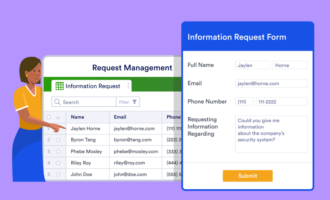If a company can’t adapt to the constantly-evolving environments in which it operates, it will struggle to survive.
The challenges of recent years have made it clear just how vital adaptability is. With the rapid advancement of digital technologies and shifting market dynamics, only the most agile companies have been able to sustain or grow their operations.
And they have done that by proactively executing business process transformations.
What is business process transformation?
Business process transformation is essentially the rethinking and reengineering of processes to bring about changes that streamline those processes and drive operational efficiencies. “Transformation requires an end-to-end mindset,” writes Tom Davenport and Thomas Redman, distinguished professor of information technology and management at Babson College, and president at Data Quality Solutions, respectively.
It requires changes in workflows, functions, and technologies to respond to shifts in business strategies and goals. The key purpose of process transformation is to help a business adapt, scale, and thrive over the long term.
“In a world of unprecedented disruption and market turbulence, transformation today revolves around the need to generate new value — to unlock new opportunities, to drive new growth, to deliver new efficiencies,” writes Christine Anderson and fellow principals at Deloitte Consulting. Business process transformation provides organizations with “the opportunity to rethink your business and operating models to deliver breakthrough value,” they explain.
And more often than not, these transformations require radical, not conservative, changes to processes. They are meant to be a disruptive means to an end that unlocks greater value for an organization.
Key benefits of changing business processes
While there is a certain level of risk associated with transforming processes, companies can’t afford to ignore the necessity of innovation and change. Those that embrace the challenge of business process transformation will capitalize on a multitude of potential benefits, such as
- Realigning processes with new goals. Evolution requires changes to business strategies and goals. Transformation allows an organization to realign its processes with those new business objectives, increasing the likelihood of achieving those goals.
- Accelerating the business’ growth rate. Proactive business process transformation reduces waste and eliminates operational inefficiencies, thereby increasing the pace at which a company can scale.
- Elevating the value of innovation. Championing process transformation means embracing innovation and placing a premium on the value of evolution. This creates a growth-minded company that embraces change, an essential element to success in a rapidly-changing business landscape.
- Becoming a more agile organization. Flexibility and adaptability are necessary for organizational success. The ability to transform business processes makes companies more agile so they can better adapt to change.
- Reducing operating costs. Outdated or inefficient functions, processes, and technologies can drain a company’s finances. Business process transformation allows organizations to find efficiencies that reduce operating costs, leading to better financial stability.
Though the idea of transforming processes that have been in place for a long time may be intimidating, ignoring the need to innovate could prove fatal for an organization. That’s why it’s critical for companies to improve business processes. The right technology partner can help ease the burden of those transformations.
How Jotform helps with business process transformation
Jotform is one of those partners that can facilitate business process transformation for your organization. How? By improving your company’s workflows through automation. Just the small act of changing from paper to digital workflows can exponentially streamline those processes and eliminate waste.
To that end, our form and PDF templates allow you to automate the data collection process. This not only saves you time and money by eliminating manual collection processes, but it also reduces the likelihood of human error, thereby increasing the efficiency of data collection. Once information is collected, Jotform’s table templates help you track and manage the data that informs and drives your process transformations.
Additionally, our workflow templates automate the approval process for workflows. With features such as field hiding, automatic actions, automated email notifications, autoresponders, and e-signature collection, Jotform’s workflow templates let you streamline nearly every process in your organization. Jotform’s customizable board templates enable to track tasks, manage workflows, and collaborate with your team efficiently.
Photo by: Drazen Zigic



























































































Send Comment: